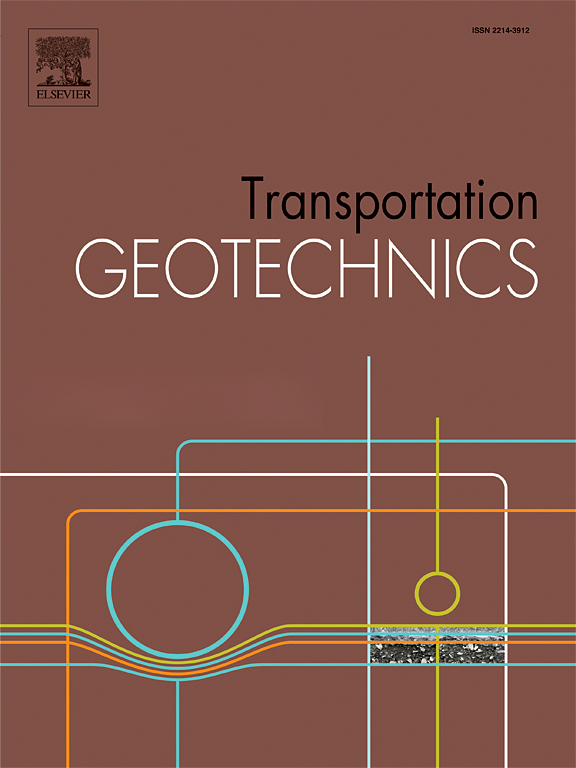Strength development of bottom ash based geopolymer and their application in columns to improve soft soil underneath embankment: Achieving sustainability in ground improvement
IF 4.9
2区 工程技术
Q1 ENGINEERING, CIVIL
引用次数: 0
Abstract
In this study, bottom ash (BA) was used in ground improvement to conserve natural resources and promote sustainability. The effect of the fineness of BA on the properties of a geopolymer and the bearing capacity (qu) performance of embankment resting on the BA-based geopolymer columns (BAGC) was evaluated. The unconfined compressive strength (UCS) test and mineralogical, microstructural, and elemental analysis were carried out for the BA-based geopolymer (BAG) prepared with a different fineness of BA. Laboratory scale experiments and numerical analysis were performed on the soft soil reinforced with two column length to diameter ratios (L/d) of 6 and 8 and three column spacing to diameter ratios (s/d) of 1.8, 2.4, and 3.6. The UCS test results depict that UCS values significantly increased with the increase in the fineness of BA and satisfy the minimum strength requirement (1034 kPa) for the ground improvement project. The mineralogical analysis, microstructure, and elemental characterization showed that increasing BA fineness resulted in more BA decomposition and a denser geopolymer matrix. The results achieved from the laboratory scale experiments and numerical simulations showed that ultimate bearing capacity (qult) is enhanced by decreasing the s/d and enlarging the L/d values. Moreover, a mathematical expression with R2 of 0.999 was developed to predict qult. This study shows that BA-based geopolymer can be used to improve soft ground with substantial environmental benefits.
求助全文
约1分钟内获得全文
求助全文
来源期刊

Transportation Geotechnics
Social Sciences-Transportation
CiteScore
8.10
自引率
11.30%
发文量
194
审稿时长
51 days
期刊介绍:
Transportation Geotechnics is a journal dedicated to publishing high-quality, theoretical, and applied papers that cover all facets of geotechnics for transportation infrastructure such as roads, highways, railways, underground railways, airfields, and waterways. The journal places a special emphasis on case studies that present original work relevant to the sustainable construction of transportation infrastructure. The scope of topics it addresses includes the geotechnical properties of geomaterials for sustainable and rational design and construction, the behavior of compacted and stabilized geomaterials, the use of geosynthetics and reinforcement in constructed layers and interlayers, ground improvement and slope stability for transportation infrastructures, compaction technology and management, maintenance technology, the impact of climate, embankments for highways and high-speed trains, transition zones, dredging, underwater geotechnics for infrastructure purposes, and the modeling of multi-layered structures and supporting ground under dynamic and repeated loads.
 求助内容:
求助内容: 应助结果提醒方式:
应助结果提醒方式:


